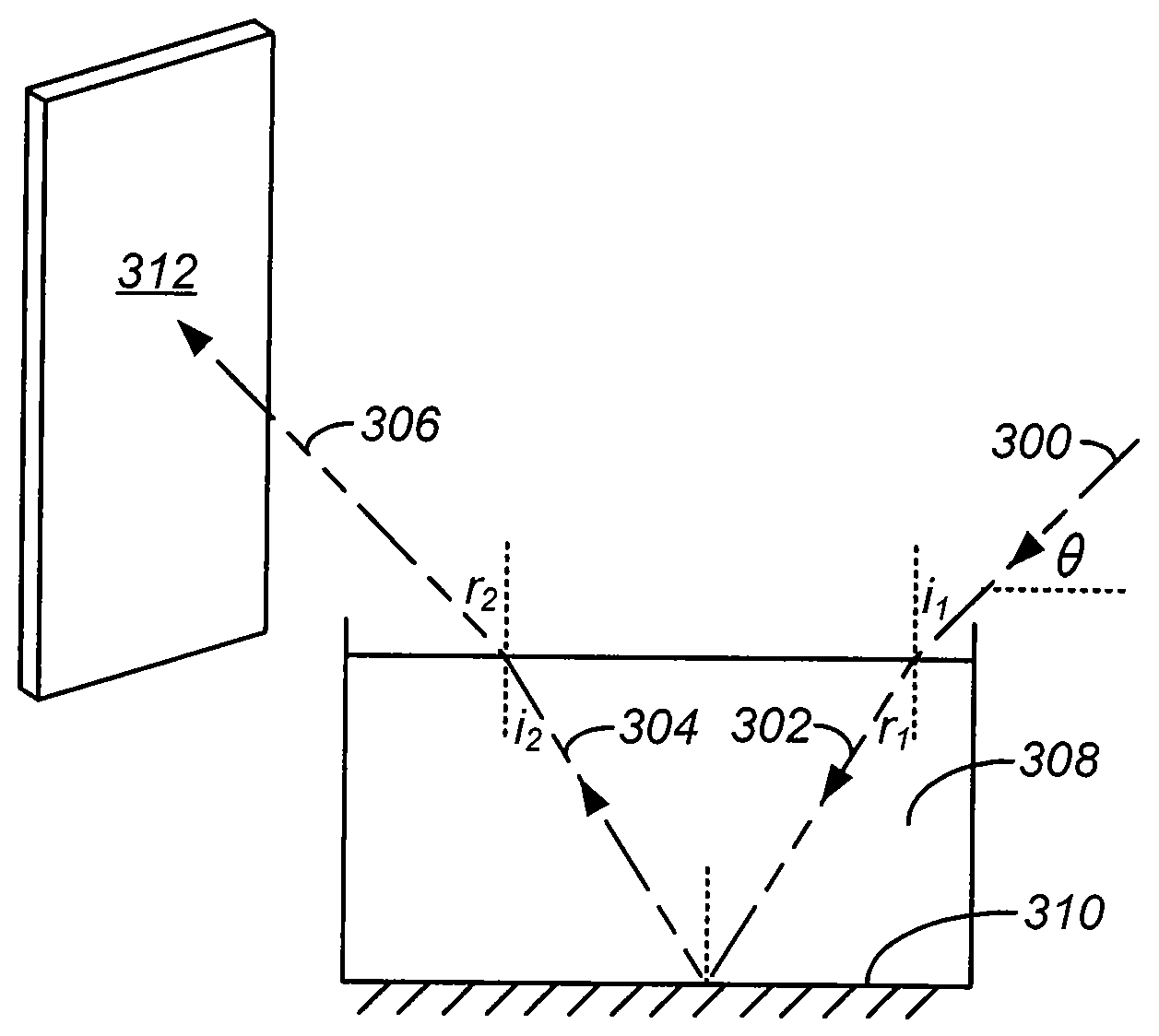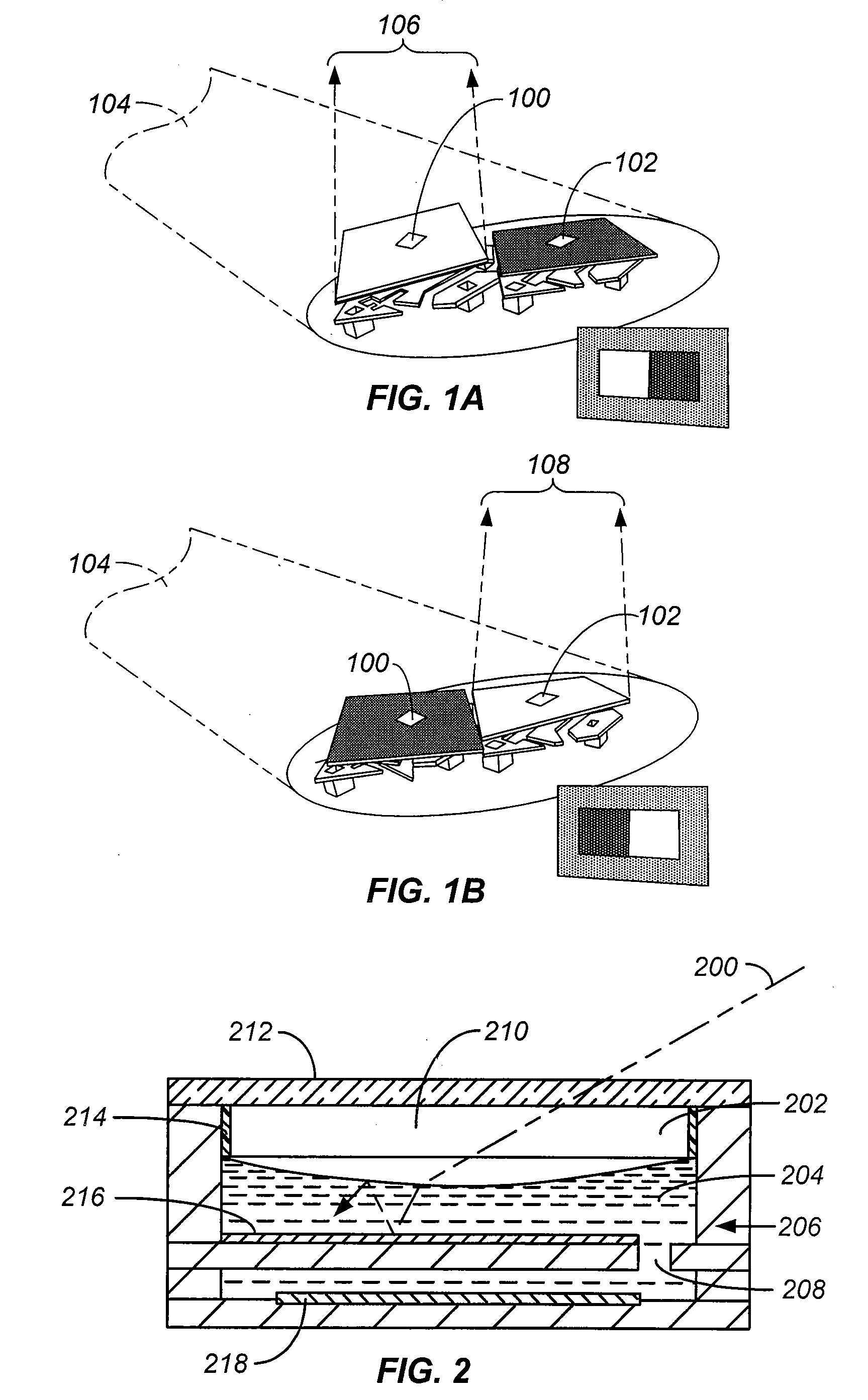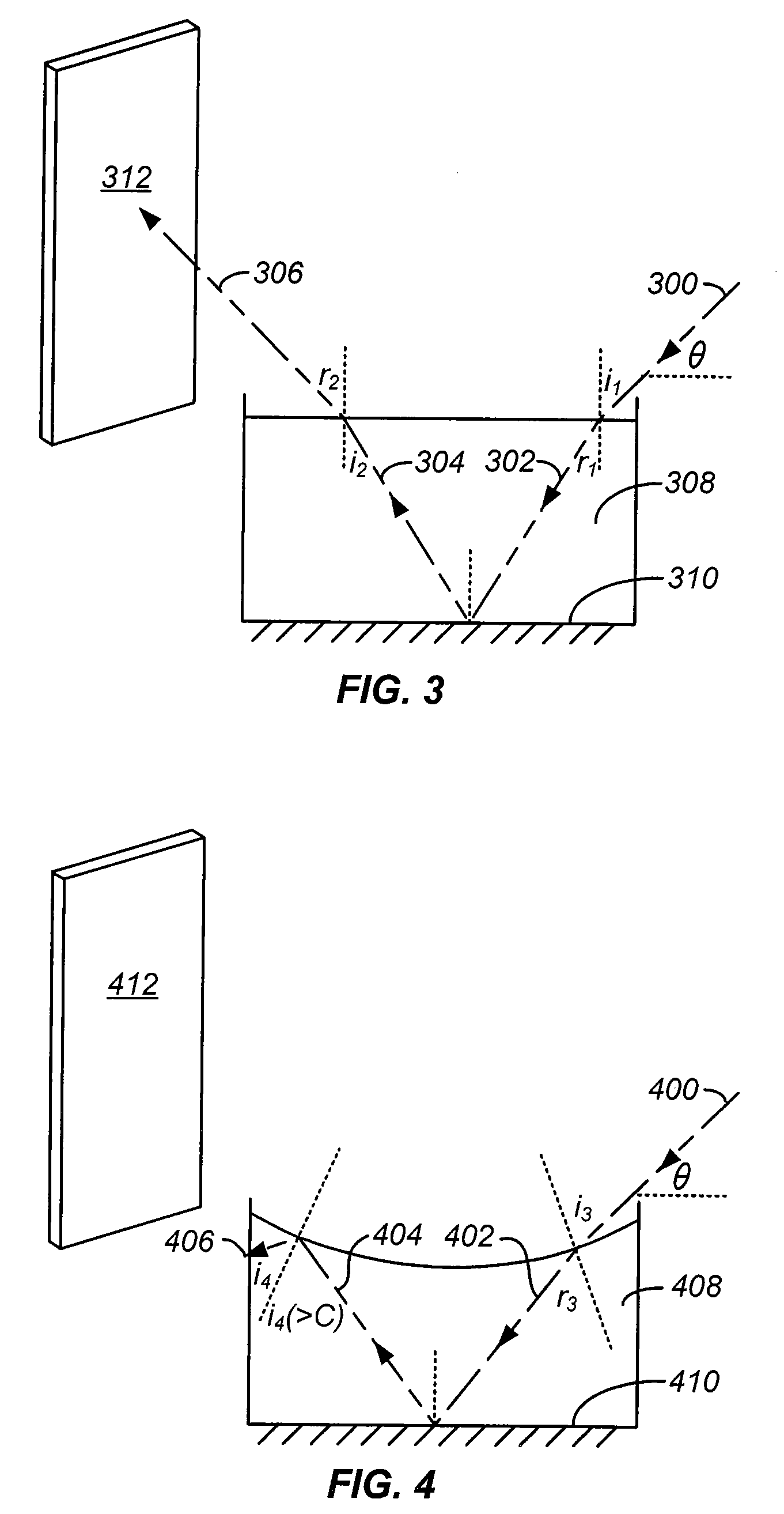Device and method to realize a light processor
a technology of light processors and devices, applied in the direction of mirrors, instruments, mountings, etc., can solve the problems of failure to address other problems, damage to the hinge itself, and the slow lifting of the landing tips from the pads,
- Summary
- Abstract
- Description
- Claims
- Application Information
AI Technical Summary
Benefits of technology
Problems solved by technology
Method used
Image
Examples
Embodiment Construction
[0043]A source of light directed at a conventional DLP array is typically reflected in one of two directions for each micro-mirror, or pixel. In one direction, the pixel is “off” so that incident light directed upon the mirror will be deflected to a light absorber. In the other direction, the pixel is in the “on” position, so that light incident to that pixel will be reflected to a projector lens. The projector lens then focuses and magnifies the modulated light from the pixel onto a display screen, or to a photosensitive element of a printer. If each pixel of the array is in the “on” position for the case of a display, the displayed image will be an array of bright spots or areas.
[0044]FIGS. 1A and 1B show two pixels of a conventional DLP chip in the “on” and “off” modes. FIG. 1A shows two DLP cells with the left pixel 100 turned on and the right pixel 102 turned off. Incident light 104 hits both pixels, but only left pixel 100 reflects back light 106 to a projector lens, while rig...
PUM
 Login to View More
Login to View More Abstract
Description
Claims
Application Information
 Login to View More
Login to View More - R&D
- Intellectual Property
- Life Sciences
- Materials
- Tech Scout
- Unparalleled Data Quality
- Higher Quality Content
- 60% Fewer Hallucinations
Browse by: Latest US Patents, China's latest patents, Technical Efficacy Thesaurus, Application Domain, Technology Topic, Popular Technical Reports.
© 2025 PatSnap. All rights reserved.Legal|Privacy policy|Modern Slavery Act Transparency Statement|Sitemap|About US| Contact US: help@patsnap.com



